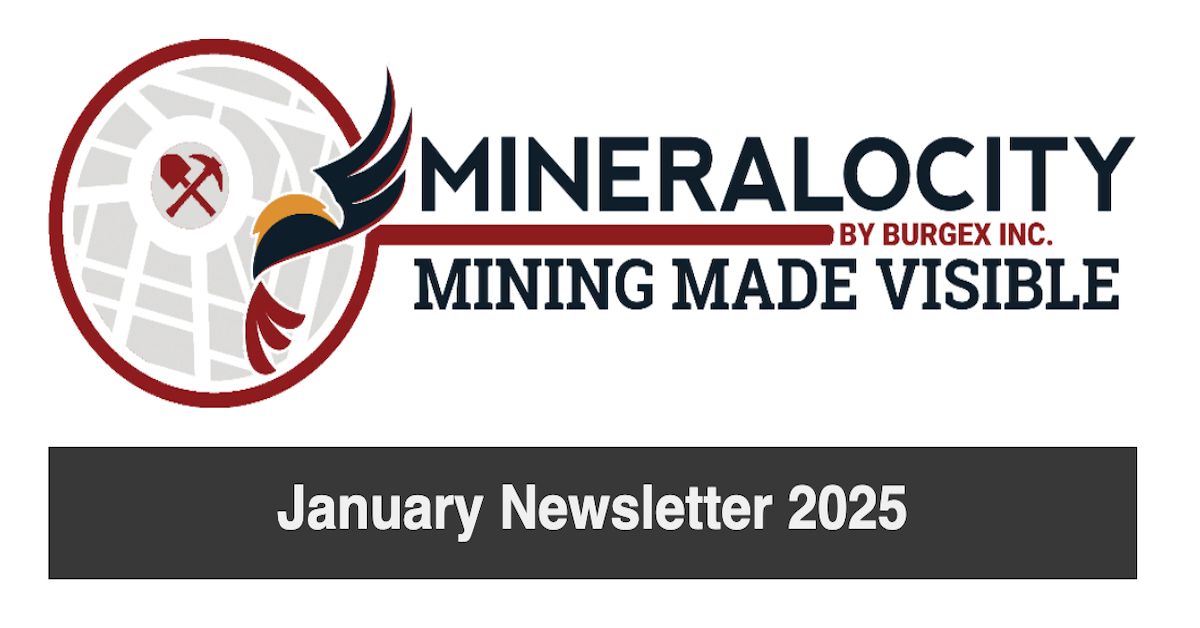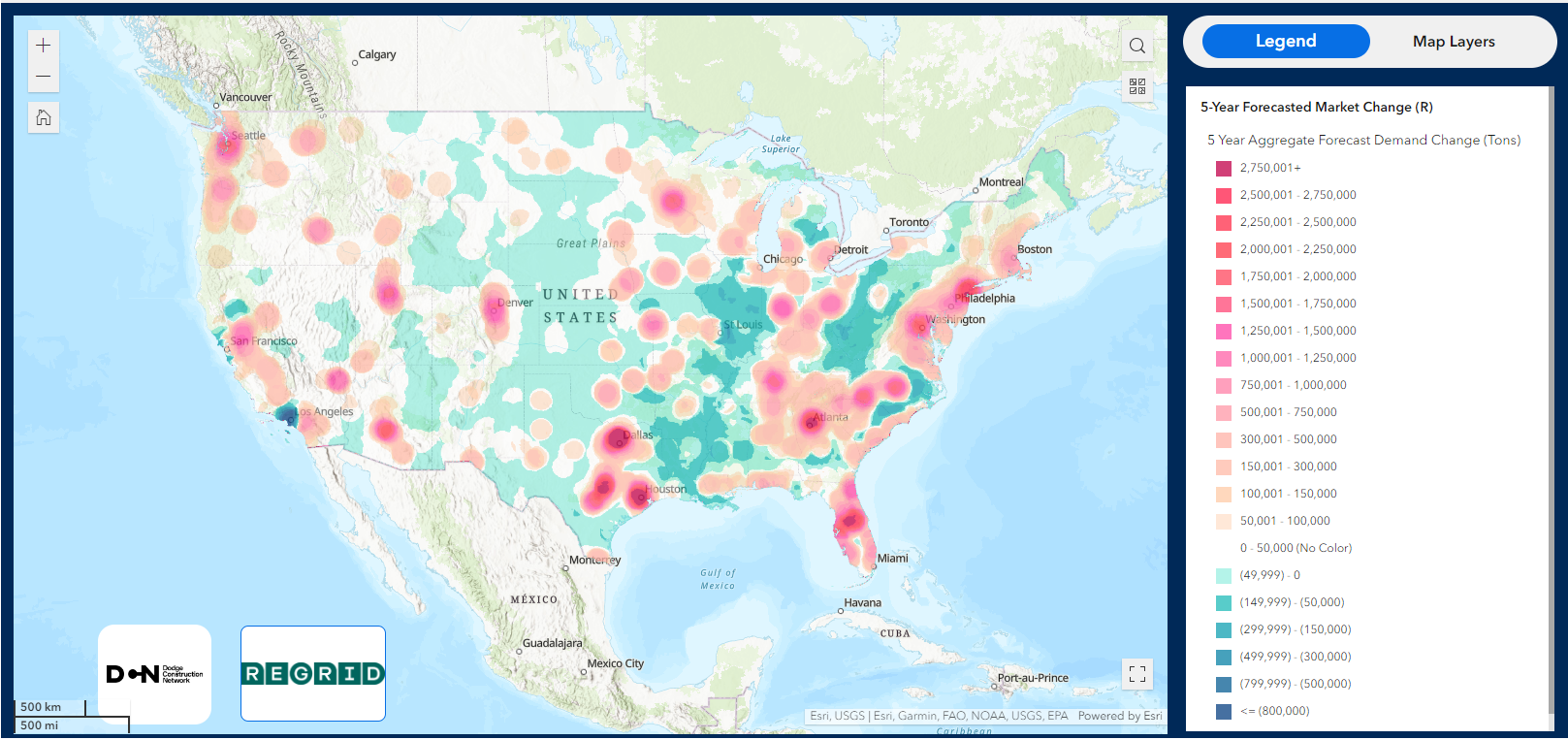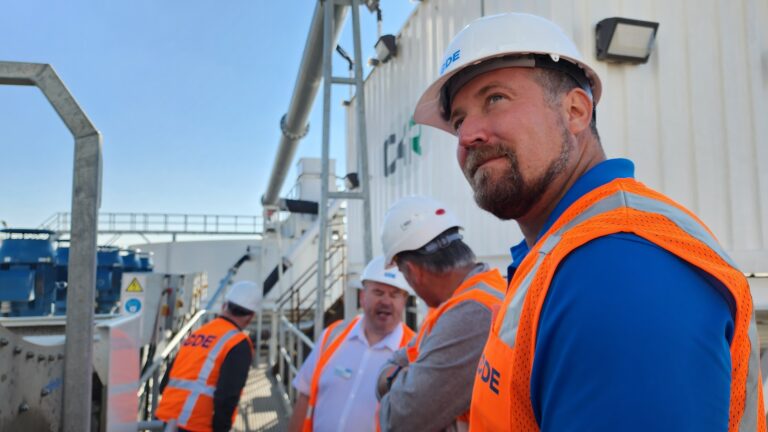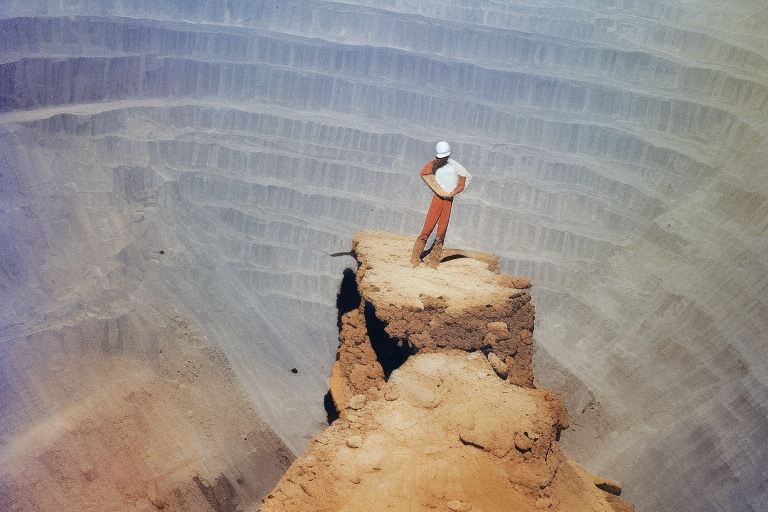We’re excited to announce a major renovation of the Mineralocity platform, based directly on your feedback. We are adding powerful new data, more intuitive features, and new ways for your team to collaborate.
Contact Us Today
Contact Us Today
We’re excited to announce a major renovation of the Mineralocity platform, based directly on your feedback. We are adding powerful new data, more intuitive features, and new ways for your team to collaborate.
Since the very beginning, Burgex has helped shape AggNexus with one goal in mind: creating meaningful, impactful conversations in the aggregates and concrete space.
Explore the top 25 U.S. counties by estimated aggregate demand in 2024. Learn how construction trends, infrastructure investments, and population growth are driving demand for aggregates across key regions.
As we continue to develop and refine the Mineralocity platform, we’re excited to share the powerful capabilities it offers for both greenfield exploration and high-level market research. Whether you’re looking to gain insight into a new area for mineral discovery or analyze broader market trends, Mineralocity is the tool to help you make data-driven decisions with ease.
Maps aren’t just about geographical locations; they can tell stories, reveal trends, and even predict the future. In the construction aggregate industry, understanding these layers of information can be the difference between growth and stagnation. In this article, we showcase five incredibly revealing maps from Mineralocity Aggregates that every industry player should examine.
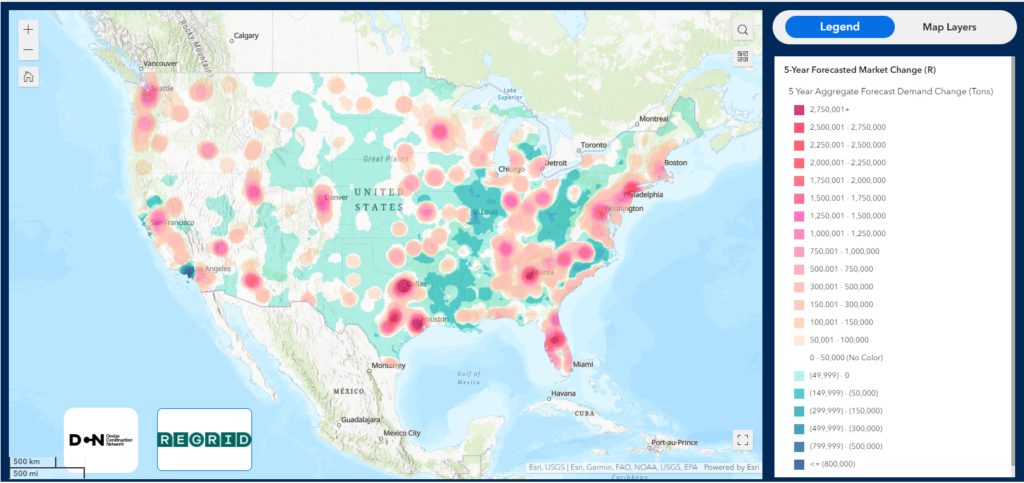
Brief Description: This map shows estimated market change for construction aggregates over the next five years.
Key Insights: East Texas, Atlanta, Tampa, Denver, Phoenix, Salt Lake, and other regions show major growth and significantly increased demand for construction aggregates. On the flip side, Los Angeles is showing a significant decrease in demand, as is most of Illinois and a significant part of the Appalachians.
Business Applications: Shifting demand creates opportunities to shift existing production to growing markets or consider greenfielding new sites near anticipated high demand. In areas of decreasing demand, operations may need to be scaled back or look to other markets or products to succeed.
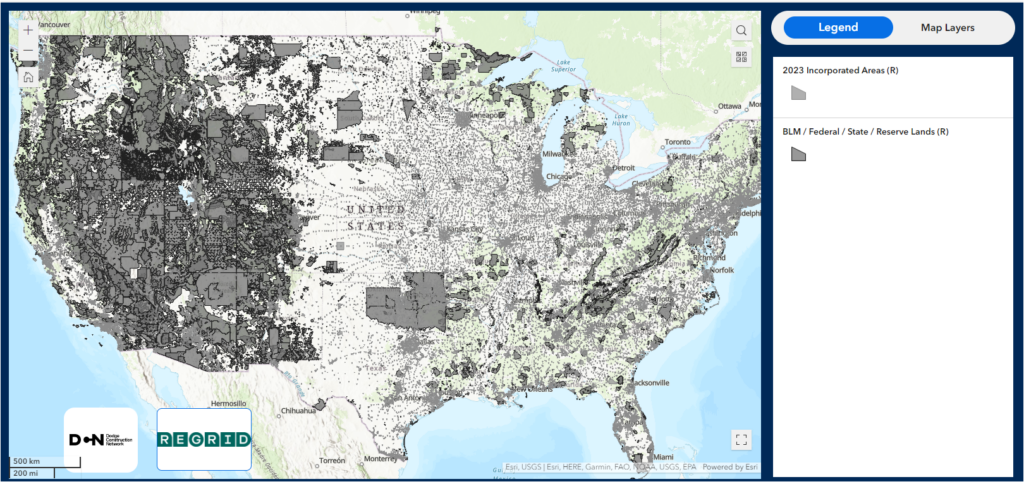
Brief Description: Every region of the United States has a different regulatory framework and fabric of land ownership. This map illustrates how much of the Western United States is covered by federal, state, and tribal lands. The light gray areas on the map illustrate incorporated areas, which are scattered throughout the country.
Key Insights: While not all gray areas are “off limits”, many will have significant challenges or regulatory hoops that will need to be navigated. Construction aggregate producing operations are found throughout many of these regions, but many may be located in areas that would be difficult, if not impossible, to permit today.
Business Applications: This map is useful for locating potential greenfield sites that are outside of incorporated areas or other places – like national parks or wilderness areas – that may be restrictive for development.
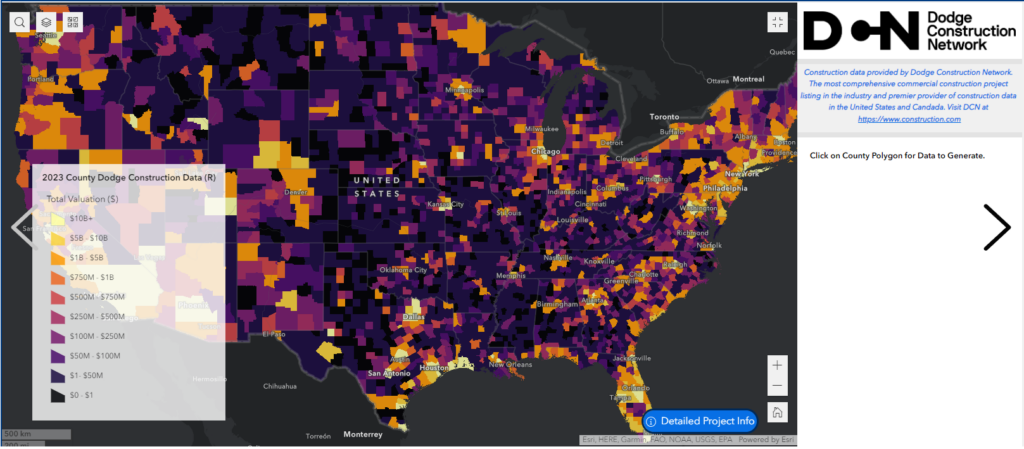
Brief Description: What does the map tell us about upcoming infrastructure and construction projects? The areas that are yellow represent the highest amount ($10 billion+) of construction aggregate heavy wide infrastructure, local infrastructure, and non-residential construction projects that are planned. The map is broken down by county. Within the Mineralocity Aggregates application, each of these counties can be explored further to identify the number of projects and anticipated spending for each category.
Key Insights: Much of this information correlates with the findings from our demand heatmap, but there are other areas where major aggregate heavy projects are occurring that don’t directly coincide with growing populations. Emery County, Utah – for example – has over $26.3 billion in planned projects and has only a small rural population.
Business Applications: Portable crushers and other quickly scalable operations can be considered for wide and local infrastructure projects that are in areas that don’t have a large permanent aggregate production base.
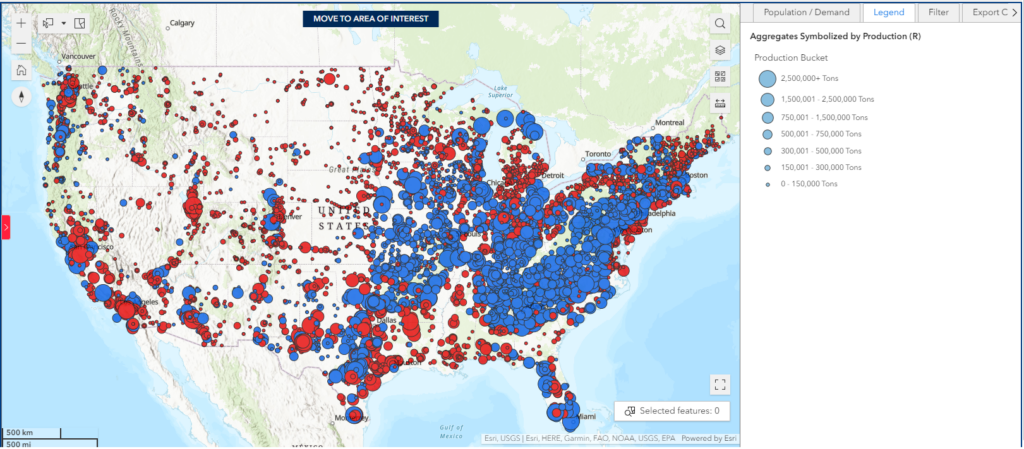
Brief Description: This map shows the relative side of construction aggregate producing operations throughout the United States. Blue circles are crushed stone producing operations (quarries) and red circles produce sand and gravel (pits or dredges).
Key Insights: The size of bubbles generally coincides with major population centers or rail access that ties to major urban centers. The distribution of blue and red circles is dictated by geology. You can see in the Southeastern United States, the curve of the fall line with rock above and coastal plane below with its associated sand and gravel operations. Bonus feature – Mineralocity Aggregates creates an interactive pie-chart that shows the actual market share for major producers within the map view. This is a powerful way to get a quick feel for major regional players when exploring new areas.
Business Applications: How could businesses use this information for their strategic planning? Understanding regional competition is key to discovering how to best strategically be positioned within a new market. Each region of the United States has a unique landscape of producers large and small.
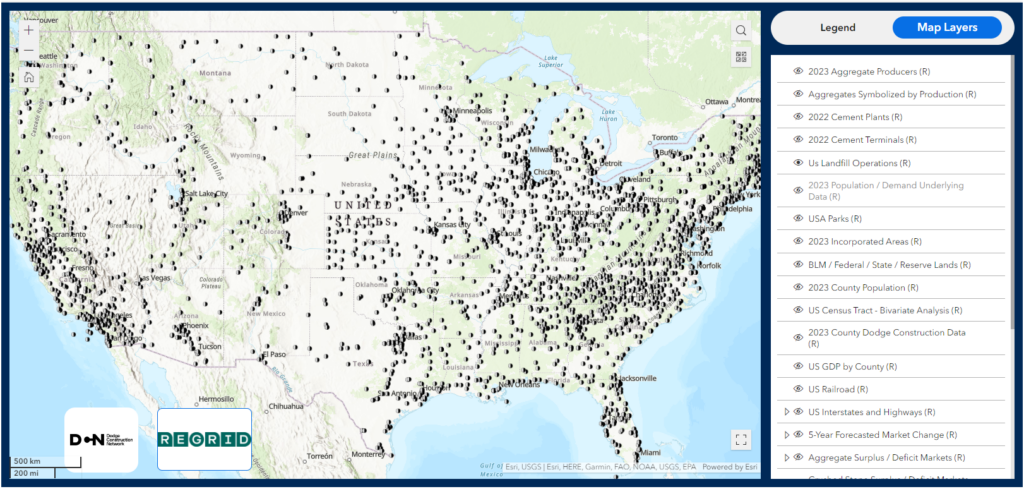
Brief Description: This map shows the location of every landfill location throughout the United States. This is where construction waste, ranging from excavation waste to concrete and asphalt goes to be buried and disposed of.
Key Insights: Recycled aggregate and construction waste is increasingly becoming a larger and more important aspect of the overall aggregate industry. While these recycled materials currently only account for a small percentage of overall consumed tonnage, it is likely that it will grow significantly over the next several decades. Early adapters will be positioned best to succeed.
Business Applications: Placing a recycling facility between major projects and landfills could create lucrative opportunities.
These maps offer a multi-dimensional view of the construction aggregate industry, providing actionable insights for businesses eager to carve out or defend their market share. By leveraging the power of Mineralocity Aggregates’ mapping capabilities, companies can make more informed decisions that lead to sustainable growth.
Ready to dive deeper? Sign up for Mineralocity Aggregates and start exploring these maps and many more for your strategic advantage.
Last week, the Mineralocity Aggregates team had the distinct pleasure of touring Calgary Aggregate Recycling Inc., in Calgary, Alberta. The occasion was a special open house hosted by CDE, an Irish company at the forefront of traditional aggregate processing and cutting-edge recycling technology. This experience provided invaluable insights into the sustainable future of aggregate processing and recycling.
Before diving into the tour details, it’s important to understand the role that CDE plays in the aggregate recycling industry. With the motto, “Engineered for a Circular Economy,” CDE is doing more than just pioneering waste recycling; they’re laying the groundwork for a more sustainable future. They specialize in providing wet processing solutions that divert over 20 million tons of waste from landfills annually. Whether it’s construction and demolition waste, contaminated soils, or hydro excavation waste, CDE transforms these materials into valuable construction resources.
During our tour, we were fortunate enough to see the plant process different types of waste, including excavation and hydro excavation waste. The system, efficient and precise, separates the waste into sorted, washed, and screened streams of rock, sand, and fines.
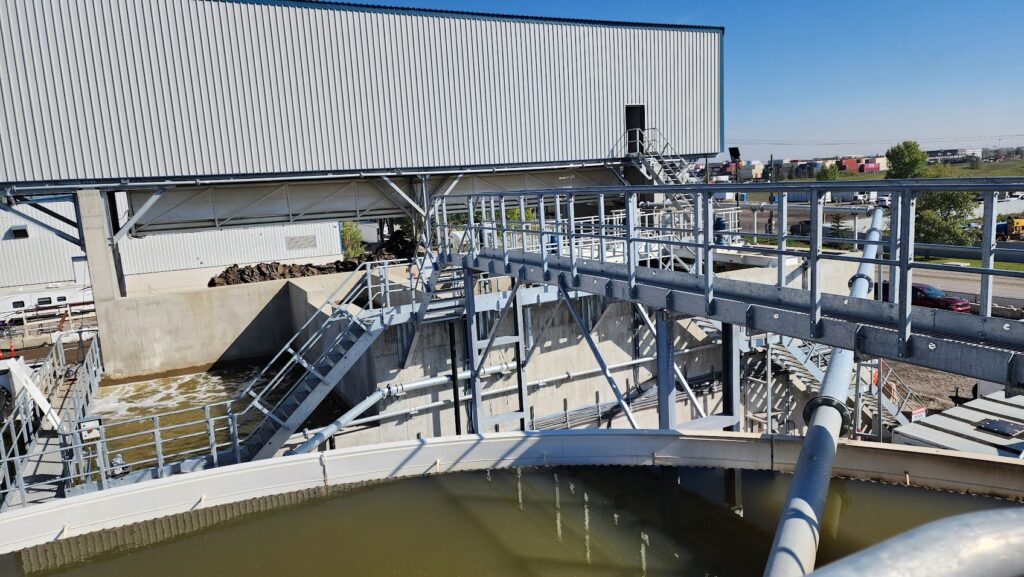
A highlight of the plant’s operation was its closed-loop water system, which recycles ~95% of the water used. This feature not only conserves a critical natural resource but also allows the plant to function with a minimal environmental footprint. This allows for faster permitting and a lower impact footprint.
What stood out during the tour was the plant’s commitment to efficiency. Every aspect of the operation can be monitored from a single dashboard, ensuring that each element runs at peak efficiency to maximize uptime. This is a crucial aspect for any plant that aims to be both profitable and sustainable.
The tour was more than just an educational experience; it was an inspiring vision of the potential that lies ahead. One of the most immediate takeaways was the need to reevaluate our perceptions of waste. Traditionally viewed as something to discard, waste, as demonstrated by Calgary Aggregate Recycling Inc. and CDE, can be a valuable resource.
The advanced technologies we observed have significant scalability and adaptability potential. With CDE’s wet processing solutions capable of diverting over 20 million tons of waste from landfills annually, one can only imagine the global impact if more such facilities were to adopt these technologies. And given that these technologies can be adapted to handle various types of waste—from excavation waste to contaminated soils—it opens doors for widespread industry adoption. We were told that CDE can build these plants to handle as little as 70tph to as much as 700tph. They also offer custom solutions that could potentially be even larger.
While the environmental implications are obvious, there are also substantial economic benefits to consider. The plant’s closed-loop water system, for example, significantly reduces water costs. The ability to monitor every aspect of the operation from a single dashboard allows for real-time decision-making, reducing downtime and boosting profitability.
The success of facilities like Calgary Aggregate Recycling Inc. should encourage policymakers to support sustainable practices in the aggregate industry. By doing so, they can facilitate the transition from traditional waste management to circular economic models that are both profitable and beneficial for the planet.
In a world that’s increasingly cognizant of environmental responsibility, adopting the practices showcased during our tour is more than just good business sense—it’s a societal imperative. Companies that are quick to embrace these technologies not only stand to gain a competitive edge but also become leaders in setting new industry standards.
By embedding these forward-thinking practices into our industry’s operations, we not only mitigate our environmental impact but also create a more resilient, cost-effective, and ultimately more sustainable business landscape. The tour reaffirmed our belief that with the right technologies and practices, the aggregate industry has a bright and sustainable future.

The tour of Calgary Aggregate Recycling Inc. was eye-opening, to say the least. It revealed a glimpse of what is possible when innovation meets sustainability. With companies like CDE leading the way, the future of aggregate recycling is not just promising; it’s imperative. And for teams like ours at Mineralocity Aggregates, it affirms our commitment to be part of this sustainable future.
In today’s fast-paced, technology-driven world, it’s easy to overlook traditional industries like construction aggregates. However, the reality is that the demand for aggregates—sand, gravel, crushed stone, and beyond—will never cease to grow. This article will explore the intrinsic factors that ensure the perpetual growth of the construction aggregates industry. While it’s true that the construction aggregates industry will always be growing somewhere, it won’t always be growing everywhere at the same time.
Aggregates are the backbone of nearly every construction project, from roads and bridges to schools and hospitals. As cities expand and populations grow, the need for new infrastructure and the repair of existing ones ensures that the demand for aggregates remains constant.
Furthermore, the current state of infrastructure in many parts of the country is alarming. Years of underinvestment have led to crumbling roads, outdated bridges, and inadequate public transportation systems. This decline is prompting large-scale infrastructure initiatives aimed at renovation and modernization, all of which require vast amounts of construction aggregates. The American Society of Civil Engineers regularly releases a ‘Report Card’ on the state of the nation’s infrastructure, and the grades are often less than stellar. These assessments only serve to highlight the urgent need for substantial investment in infrastructure projects, which, in turn, ensures a growing demand for aggregates for years to come.
The continued urbanization of the global population is a significant driver of aggregate demand. As rural populations move into cities, the requirements for housing, roads, and other infrastructure rise, thereby leading to a corresponding increase in the need for construction aggregates.
Even during economic recessions, certain public works projects are considered essential and continue to be funded. This makes the aggregate industry less susceptible to the fluctuations in the economic cycle compared to other sectors.
Modern technology isn’t sidelining the aggregates industry; it’s bolstering it. From data analytics platforms like Mineralocity Aggregates that optimize market analysis and positioning to advanced machinery that increases extraction efficiency, technology is fueling the growth of the sector.
While the industry faces environmental challenges, it is also part of the solution. Sustainable practices in aggregate extraction and the recycling of construction materials are not only possible but are becoming the industry standard.
With appropriate regulation, the aggregates industry can balance the needs of economic growth, environmental sustainability, and community concerns. This three-pronged approach ensures the industry’s long-term viability.
The construction aggregates industry is deeply woven into the fabric of modern society. Its importance in building the world around us—combined with the forces of urbanization, economic resilience, technological innovation, and environmental sustainability—makes it a sector poised for perpetual growth. Don’t underestimate the importance of this fundamental industry; it’s here to stay and grow, come what may.
Navigating the competitive landscape of the construction aggregate industry means being prepared for a multitude of challenges, from new competitors to economic shifts and beyond. Understanding these traditional threats to your market share is vital for long-term success. This article outlines some of these key factors and offers strategies to help you maintain and grow your market share.
The arrival of a new competitor in the construction aggregate industry can significantly impact your business, potentially eating into your market share. These newcomers often come armed with aggressive pricing strategies, innovative products, or even a unique marketing approach, designed to lure away even your most loyal customers.
The first step in effectively countering new competition is recognizing their presence as early as possible. This can be accomplished through consistent market research, watching for permitting applications, monitoring industry publications, and even keeping an ear to the ground among your customer base and suppliers.
Once you’ve identified a new player in the field, a detailed competitor analysis is essential. This will help you understand their strategies, strengths, weaknesses, and most importantly, their potential impact on your market share. Your SWOT (Strengths, Weaknesses, Opportunities, and Threats) analysis should be updated to include this new competitor. This will help you identify any adjustments needed in your own value proposition.
Based on your SWOT analysis, review your value proposition to identify how you can differentiate your offering from the new competitor. This might involve enhancing product features, revising pricing structures, or improving customer service. It’s crucial to remind your customers why they chose your brand in the first place.
The market conditions are ever-changing, especially with a new competitor stirring the waters. Continuously monitor their strategies, customer feedback, and their impact on your market share. This is a dynamic process that will likely require you to adapt your own strategies over time.
Platforms like Mineralocity Aggregates can provide data-driven insights into customer behavior, supply chain dynamics, and market trends. Utilize this data to adapt and refine your strategies for defending your market share against new competitors.
By understanding the strategies and tactics of new entrants, and responding proactively, you can mitigate the impact on your market share and even discover new opportunities for growth.
Local and regional economic conditions can dramatically affect your market share in the construction aggregate industry. Economic downturns often lead to reduced construction activities, while booms can bring about increased competition and higher operational costs. Here’s how to safeguard your market share during such uncertain times.
Be proactive in monitoring key economic indicators relevant to your industry. These might include interest rates, unemployment levels, and construction starts. Understanding these indicators can help you predict how market demand will be affected.
In times of economic instability, a rigid business model can be a liability. Flexibility allows you to quickly adapt to changing circumstances, whether it’s adjusting production levels, diversifying product offerings, or temporarily scaling back on certain operations.
Maintaining a healthy cash flow is crucial, especially during economic downturns. Consider renegotiating terms with suppliers or exploring alternative financing options to bolster your liquidity. This financial cushion can provide you with the room to maneuver when times get tough.
Cost optimization is not merely about cutting expenses; it’s about making your operation leaner and more efficient. This might include improving operational efficiencies or renegotiating contracts with suppliers. Any savings can be redirected to strategies aimed at maintaining or increasing market share.
Utilize risk management tools and strategies to prepare for potential financial downturns. This could include securing long-term contracts with favorable terms or hedging against market variables that could affect your costs, such as fuel prices.
Utilize data analytics platforms like Mineralocity Aggregates to gain insights into customer behavior, pricing elasticity, and market trends. This enables you to make informed decisions and develop adaptive strategies that can weather economic fluctuations.
By being prepared and adaptive, you can better defend your market share when economic conditions shift. Uncertain times often bring both challenges and opportunities—being agile and prepared can help you capitalize on the latter.
The construction aggregate industry often faces dramatic fluctuations in demand due to the cyclical nature of large construction projects. Whether it’s the commencement of a massive infrastructure project or the winding down of a long-term development, these shifts can significantly affect your market share. Here’s how to stay ahead:
Staying informed about local and regional construction activities is essential. Subscribe to industry journals, participate in local business forums, and maintain relationships with key players to gather early intelligence about upcoming projects or project completions.
When you anticipate an increase in demand due to an upcoming project, effective stockpile management becomes critical. You may need to ramp up production in advance to meet this demand, which will also necessitate calculating storage costs and considering the shelf-life of your aggregates.
When faced with a sudden influx of large projects, your operation must be scalable. This could mean leasing additional machinery, hiring temporary labor, or partnering with other producers. Scalability allows you to capitalize on increased demand without overextending your resources.
Large projects might require bulk quantities but at more competitive pricing. Revisiting your pricing strategy in such cases is crucial. Offering tiered pricing or early-bird discounts can not only secure a large project but also protect your market share.
As large projects wind down, demand for aggregates will drop, sometimes significantly. Having a transition plan can help you adjust your production levels and shift your focus to other markets or smaller projects. Failing to prepare for this drop in demand can result in overstock and reduced profitability.
Platforms like Mineralocity Aggregates can offer invaluable insights for predicting future demand patterns. Utilizing predictive analytics helps you prepare for market fluctuations, allowing you to make well-informed decisions regarding production, pricing, and distribution.
By staying proactive and adaptable, you can navigate the often unpredictable tides of project-based demand, defending and even growing your market share in the process.
In a constantly evolving landscape like the construction aggregate industry, defending your market share is a never-ending task. The threats are many and varied—from new competitors disrupting the market to economic uncertainties that can shake even the most stable of businesses. On top of that, the very nature of the industry is such that demand can ramp up or plummet based on the ebb and flow of large construction projects.
Adaptability and proactivity are your best allies in such an environment. Keeping an eye out for new entrants can help you maintain your competitive edge. During uncertain economic times, a well-honed financial strategy is your best defense, helping you to survive and even thrive. Similarly, understanding the dynamics of demand, particularly during the launch or conclusion of major projects, allows for smarter stockpile management, more dynamic pricing strategies, and a better-planned operational scale.
The thread that weaves all these strategies together is data. Advanced analytics platforms like Mineralocity Aggregates offer crucial insights that can shape your strategies and decisions. These platforms allow you to predict trends, understand market dynamics, and tailor your operations in a manner that not only defends your current market share but sets the stage for future growth.
In the end, the key to successfully defending and expanding your market share lies in your ability to be proactive rather than reactive. Strategies must be continuously reviewed, plans regularly updated, and your finger always kept on the pulse of industry shifts and changes.
If you’re eager to get even more insights into defending your market share, consider booking a free demo today to learn more about the Mineralocity Aggregates platform and how you can immediately leverage its powerful insights in your business!
In the competitive landscape of the construction aggregate industry, holding onto your market share is often as challenging as expanding it. The key to retaining your slice of the pie lies in proactive strategies that span across various domains, including pricing, customer retention, and innovation. In this guide, we’ll dive into each of these critical pillars and how they can be effectively managed for defending market share in the aggregate industry.
Setting the right price for your aggregates is not just a matter of arithmetic; it’s a strategy that can make or break your market share. Pricing influences not only immediate sales but also impacts long-term customer relationships. Here’s how to wield pricing as a powerful tool for defending market share in the aggregate industry:
Understanding Your Costs
Before you even think about setting a price, it’s crucial to have a clear understanding of your production and operational costs. This includes everything from raw materials to labor, transportation, and overhead. Knowing your costs sets the floor for your pricing strategy and helps avoid selling at a loss, a cornerstone principle in defending market share in the aggregate industry.
Value-Based Pricing
Gone are the days when the lowest price won the customer. Today’s buyers are increasingly looking for value, which encompasses not just the product but also the entire customer experience. Can you provide faster delivery times? Is your customer service exceptional? Are your aggregates of higher quality compared to competitors? All of these factors can justify a slightly higher price if customers perceive they are getting better value.
Dynamic Pricing Strategies: A Real-World Example
In the volatile market of construction aggregates, static pricing can be a severe disadvantage. Consider implementing dynamic pricing, where prices are adjusted based on real-time market conditions such as fluctuations in demand, seasonal trends, or competitor pricing. For instance, a mine recently required customers to purchase one ton of concrete sand (of which they had an excess) in order to purchase a ton of gravel (which was more scarce and valuable in the area). This not only enabled the mine to move inventory efficiently but also provided customers with a bundled solution, meeting multiple needs in one transaction. Such innovative strategies can be automated using advanced data analytics platforms like Mineralocity Aggregates, which closely monitor market conditions and offer valuable insights for defending market share in the aggregate industry.
Discounting and Bundle Pricing: A Tactical Edge for Defending Market Share
Strategic discounting and bundle pricing are effective ways to increase sales volumes, thereby defending or even growing your market share. For example, offering a discount for bulk orders or longer-term contracts can incentivize customers to make larger, more committed purchases.
Communication and Transparency in Pricing
Any pricing strategy is only as effective as its communication. Make sure your customers understand your pricing model, what they’re paying for, and why it offers better value. Transparency can go a long way in building trust, an essential factor in defending market share in the aggregate industry. By meticulously crafting your pricing strategies, you’re not just setting a price; you’re defining the value of your brand and product in the eyes of the customer.
Keeping an existing customer is generally cheaper and more efficient than acquiring a new one. The aggregate industry is no different. Focus on customer service, transparent communication, and reliable delivery to keep your customers coming back. Additionally, customer loyalty programs or long-term contracts can be an excellent way to secure steady business while also locking in a portion of your market share.
The saying “innovate or die” holds particularly true in the construction aggregate industry. Innovation isn’t confined to the product alone; it extends to processes, supply chain management, and even customer interaction channels. Embrace technology solutions like the Mineralocity Aggregates platform to gather data-driven insights, predict future demand, and streamline operations.
Platforms like Mineralocity Aggregates not only assist in predicting future trends but also offer the ability to visually compare current and future supply and demand balances side by side. In an industry where the margins can be thin, these data-backed insights can be game-changing when it comes to defending market share in the aggregate industry.
Defending your market share requires a multifaceted approach that spans pricing, customer retention, and innovation. While each of these pillars is essential, their true power lies in their integration. Utilizing platforms like Mineralocity Aggregates can offer invaluable insights and data, ensuring that your strategies are not just reactive but proactively aligned with market dynamics.
Intrigued by the strategies discussed in this article? To learn more, download our Top Aggregate Producers Report for 2023 and get ahead in your market share defense game.




